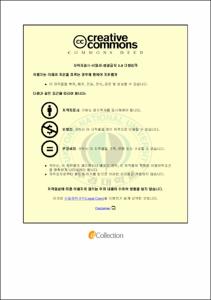적 콜라비의 항당뇨 및 항염증 효과
- Abstract
- The kohlrabi is a biennial plant belonging to papaverales brassicaceae, and is also called turnip cabbage or bulb cabbage. The word 'kohlrabi' is an English name and is the compound word formed from the German words 'kohl'(a cabbage) and 'rabi'(a turnip). It is a biennial plant divided from a cabbage and the breed is classified into Asian group and European group. In the plants in Asian group, both the leaves and the corms are green and the corms have rough surface. In the plants in European group as the main breed, the corms are purple and have smooth surface, covered with white waxy substance. In Korea, a kohlrabi is unfamiliar plant yet. However, the consumption of this plant is increasing with frequent introduction to people in these days. A kohlrabi has been well known as a good plant for a diet because of containing less calories and having more vitamin C, water and dietary fiber than other vegatables. Also, a kohlrabi is able to maintain a level of sweet taste consistently due to a high amount of amino acid content, and the sugar content is relatively high. The pharmaceutical effects of a kohlrabi have been known to people as good anti-inflammation and analgesic for treating feeling of cold, neuralgia, low back pain and shoulder discomfort, but there is no scientific evidence for these effects yet. A kohlrabi is rich in glucosinolates, anthocyanin and carotenoid which is known as good substances for anti-cancer effect and also reported to have anti-mutation effect, but the research for the physiological activity of this plant is, in fact, not enough yet.
In this study, anti-diabetes and anti-inflammatory activities were investigated by anti-oxidant test with methanolic extract of the red kholrabi. Peroxynitrite scavenging activities, DPPH radical scavenging activities, ABTS radical scavenging activities and total phenol content were measured for evaluating anti-oxidant activities of a kholrabi. In addition, MTT and NO test were performed for evaluating anti-inflammatory activities. PTP1B and RLAR test were also performed for evaluating anti-diabetes activities.
The methanolic extract exhibited peroxynitrite scavenging activities, DHHP radical scavenging activities, ABTS radical scavenging activities with the IC50 value of 116.79 ± 0.13, 696.83 ± 1.16, 472. 63 ± 17.45, respectively, and total phenol content was 8.91 GAE mg/g. MTT assay was performed for evaluating toxicity of methanolic extract of red kholrabi. As a result, there was no cytotoxicity in the concentration of below 800 μg/ml, and the increased production of NO by treating LPS to RAW 264.7 cells was inhibited dose-dependently with the value of 14.47 ± 3.24, 37.01 ± 2.83, 47.50 ± 3.35 by treating the amount of 200, 400, 800 μg/ml methanolic extract of red kholrabi. Methanolic extracts of red kholrabi with the concentrations of 400, 800, 1600 μg/ml showed the inhibitory effects on NO production due to dose-dependent inhibition to the expression of iNOS and COX-2. Methanolic extract of red kholrabi exhibited PTP1B inhibitory activities with the IC50 value of 287.56 ± 10.5 μg/ml. In RLAR study, methanolic extract of red kholrabi exhibited IC50 value of 287.56 ± 10.5 μg/ml.
These results indicate that methanolic extract of Bassica oleracea var. gongylodes red kholrabi may have good possibilities for useful therapeutic and preventive approach to various diabetic diseases and inflammatory diseases.
- Issued Date
- 2014
- Awarded Date
- 2014. 8
- Type
- Dissertation
- Publisher
- 부경대학교
- Affiliation
- 교육대학원
- Department
- 교육대학원 영양교육전공
- Advisor
- 최재수
- Table Of Contents
- Ⅰ. 서론 1
Ⅱ. 재료 및 방법 5
1. 재료 5
2. 시약 및 기구 5
2-1. 시약 5
2-2. 기기 6
2-3. 실험세포주 6
3. 실험방법 7
3-1. 추출 7
3-2. RAW 264.7 세포주의 배양 9
4. in vitro 실험 10
4-1. 항산화 활성 10
4-1-1. DPPH radical 소거활성 10
4-1-2. ABTS radical 소거활성 13
4-1-3. ONOO- 소거활성 13
4-1-4. Total phenolic contents 측정 16
4-2. 항당뇨실험 17
4-2-1. Protein tyrosine phosphatase 1B 억제활성 17
4-2-2. Lens Aldose reductase 억제활성 19
4-3. RAW 264.7 세포에서의 항염증 활성 21
4-3-1. MTT assay를 이용한 세포독성측정 21
4-3-2. LPS로 유도된 NO 측정 21
4-3-3. Western blot을 통한 iNOS 및 COX-2 발현 분석 22
5. 통계처리 23
Ⅲ. 결과 및 고찰 24
1. 적 콜라비 MeOH 추출물의 항산화 활성 24
1-1. 적 콜라비 MeOH 추출물의 DPPH radical 소거 활성 24
1-2. 적 콜라비 MeOH 추출물의 ABTS radical 소거 활성 24
1-3. 적 콜라비 MeOH 추출물의 ONOO- 소거 활성 25
1-4. Total phenolic contents 26
2. 항당뇨, 항당뇨 합병증 실험 27
2-1. Protein tyrosine phosphatase 1B 억제활성 27
2-2. 적 콜라비 MeOH 추출물의 aldose reductase 억제활성 28
3. RAW 264.7 세포에 대한 세포독성 평가 30
3-1. 적 콜라비 MeOH 추출물의 RAW 264.7 세포에 대한 세포
독성 평가 30
3-2. RAW 264.7 세포에서 LPS로 유도된 NO 생성에 미치는 효과 31
3-2-1. 적 콜라비 MeOH 추출물이 RAW 264.7 세포에서 LPS로
유도된 NO 생성에 미치는 효과 31
3-2-2. RAW 264.7 세포에서 LPS로 유도된 iNOS 및 COX의 발현에 미치는 영향 33
Ⅳ. 결론 및 요약 35
Ⅴ. 참고 문헌 38
- Degree
- Master
- Files in This Item:
-
-
Download
 적 콜라비의 항당뇨 및 항염증 효과.pdf
기타 데이터 / 1.18 MB / Adobe PDF
적 콜라비의 항당뇨 및 항염증 효과.pdf
기타 데이터 / 1.18 MB / Adobe PDF
-
Items in Repository are protected by copyright, with all rights reserved, unless otherwise indicated.